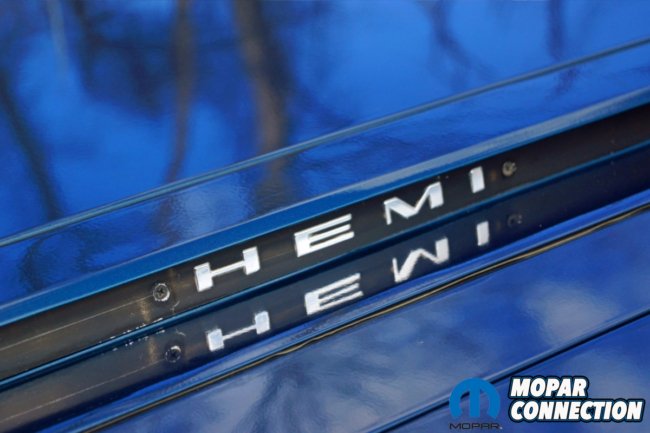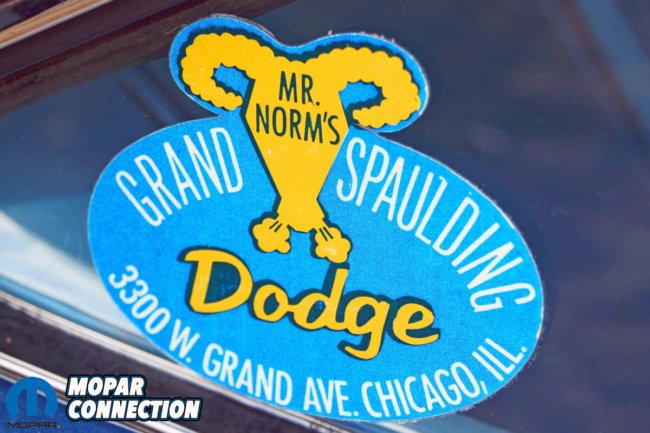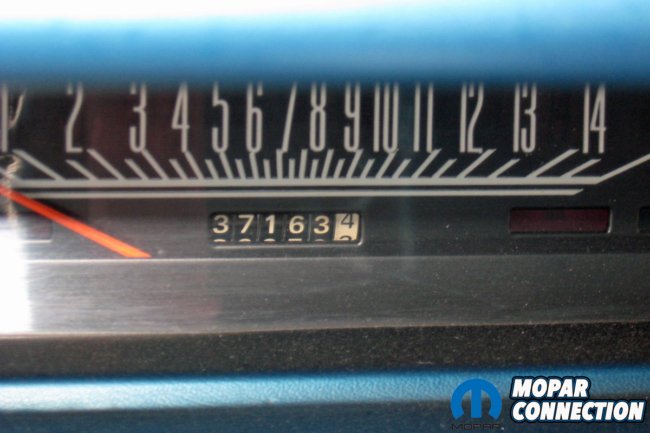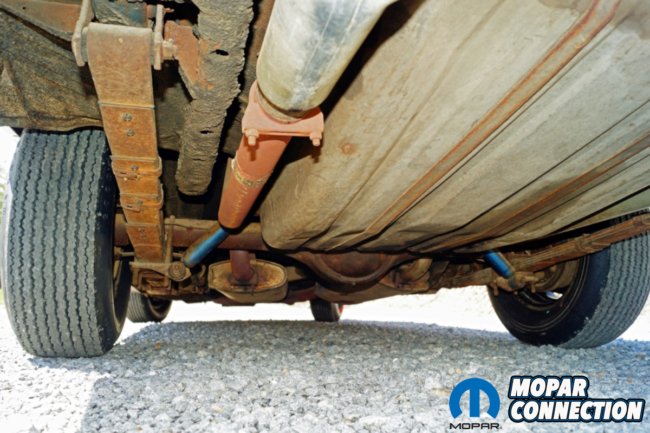
Our world is obsessed with classifying everything in an attempt to provide a sense of order in a disorganized world. In the automotive arena, we are no different. For instance, take a look at our mystifying 1968 Hemi GTX that graces these online pages. How can we label it with the understanding it is an un-restored, clean, low-mileage, mostly-original Plymouth? Could we call it a “survivor?” How about a “barn find,” “restified,” or “era correct?”
Well, all those terms may be close, but strangely, we overheard a seven-year-old child’s exclamatory declaration upon seeing the GTX, “Dad, look at that cool car, just look at it…its excellent! That seems to fit the best. Now let’s delve into the story about this GTX with no known history to see if the label fits.
In 2016, Gov Yearick, of Centre Hall, PA, picked up this low-mileage, un-restored Hemi GTX. Over the years, Gov has indulged his interest in anything with wheels. All the vehicles Gov purchases are an investment, and he obtains what he likes, based upon the engine, body color, body style, potential value increase, or whatever happens to strike his fancy. Because of these flexible standards, Gov, while not necessarily a staunch Mopar man, was able to pick up this low-mileage Hemi GTX from an estate sale in Arizona.
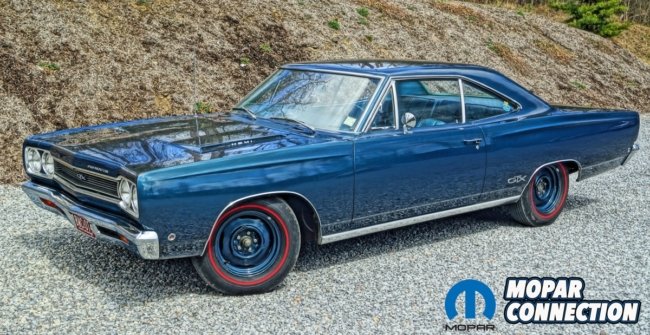
The Plymouth has only 31K original miles on the odometer, and the reason for the low mileage is just one part of the overall mystery that surrounds the GTX. Very little is known about the car, but what has been learned is that the GTX was built on New Year’s Eve of 1967, and was originally purchased in Indiana in early 1968 but by whom or from what dealership remains unknown.
The GTX is an RS23 (2-door hardtop) with a base price of $3,350. The build sheet had a hefty $604.75 option that was checked, and for those greenbacks, the GTX came equipped with the much revered 426 Hemi sporting a pair of Carter AFB carburetors. Attached to the Hemi was a Torqueflite operated via a console mounted shifter.
Outback, an 8 ¾-inch rear end stuffed with standard 3.23:1 gears and an optional Sure-Grip differential transferred the drivetrain’s torque to the rolling stock, which consisted of five F70-15 Red Streak tires (including the spare). The tires wrapped around 15-inch steel wheels that were covered by deluxe wheel covers. The GTX was sprayed in a Monotone Dark Blue Metallic tone with a matching Light Blue Metallic color for the upper door frames. The exterior trim consisted of wide sill, drip rail, and wheel lip moldings.
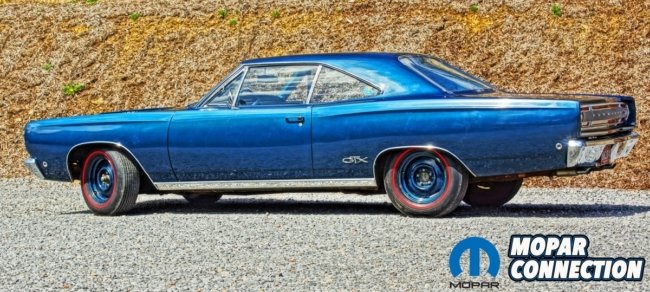
The interior received a pair of bucket seats wrapped in a light blue sport grade trim. An optional AM radio pumped out the tunes to a standard front speaker and an optional rear seat speaker. The GTX’s instrument cluster received the optional tachometer to monitor the high revving elephant hidden under the special sculpted hood embossed with the insert letters– “HEMI.” To match the whoa with the go, the GTX was equipped with power front disc brakes.
The first decade of the GTX’s life in Indiana consisted of what appears to have been fair weather driving with limited use when the snowflakes began to drop. The professional application of Rusty Jones rust treatment early in its life saved the chassis and body parts from the winter salt damage that consumed many muscle cars of the era. At some point, the dual-point distributor was replaced with a Direct Connection electronic ignition consisting of a replacement distributor, orange (ignition) box, and a matching regulator to reduce the maintenance requirements while improving the livability of the Hemi.

The last Indiana inspection sticker, still affixed to the windshield, expired June of 1978. At around that time, the GTX made its way southwest to the warm and dry state of Arizona. The GTX continued to be used sporadically until an eventful day sometime in 1984 when its usefulness ended, and the GTX was stored away in a garage and forgotten about for over three decades.
The reason for taking the GTX off the road remains a mystery to this day. Was it the combination of the lack of air conditioning and the almost year-round hot temperatures of Arizona? Was it the poor fuel mileage, and the increasing costs of gasoline that forced the owner into finding a more economical ride? Did the GTX suffer mechanical problems that led to its sidelining?
Gov was informed about the GTX through a friend, and based upon what he heard, he purchased the GTX sight unseen. He had the mysterious GTX shipped from Arizona to Stugart’s Garage just outside of Williamsport, PA. Jim Stugart, a former Richard Childress employee, worked his magic on the GTX. The engine, transmission, brake, and differential fluids were all replaced with new slippery stuff. When the 8 ¾-inch pig was pulled, the rear gears added to the mystery of the GTX.
The 3.23 gears had been replaced sometime in the past with a set of 4.56 gears (the fuel mileage theory for sidelining the GTX is gaining some traction). The 4.56 gears seemed to be a perplexing addition to the GTX as the gears appeared to be out of place when coupled with the two original Red Streak Polyglas tires still on the rear wheels.
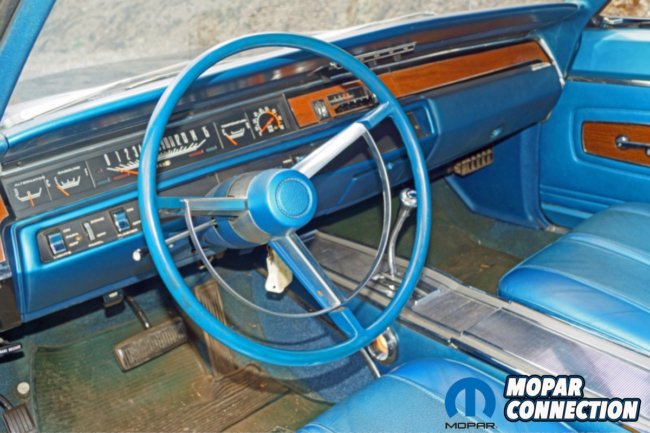
Additionally, there was no evidence that the GTX was ever drag raced, so the gears were certainly not expected. The fuel system needed great attention, so Jim took his time cleaning the fuel tank, the fuel lines, and rebuilding the Carter AFBs. He adjusted the Hemi’s valve lash and verified the engine’s cam and ignition timing were correct. Once satisfied everything was in operating order, he twisted the ignition key, and the Hemi roared to life.
For the first time in thirty-two years, the AFBs metered a mixture of hydrocarbons and air into the Hemi’s cylinders, and the factory exhaust manifolds passed the spent hydrocarbons in to the factory exhaust. Whatever the reason for the GTX being taken off the road in 1984, it was not a mechanical failure as the engine, transmission, and brakes performed without error.
After a thorough overview of the Hemi B-body, what components on the GTX were no longer the original parts installed in 1967? Both over-the-axle tailpipes had been replaced due to rust concerns being the most probable cause of failure. The newer tail pipes have the original chrome tips attached. Strangely, the factory-dimpled mufflers remain in place without any rust problems. Two of the original five F70-15 Red Streak tires where on the GTX the day it arrived in PA. All five tires have been replaced with reproduction Red Streak tires.

Lastly, some of the hoses in the engine bay had been replaced, but the correct style hose clamps remain. Other than that, the GTX is in very similar condition to how it left the assembly line on that New Year’s Eve day way back in 1967. A car is only original once, so Gov has no plans to restore the GTX, rather, he is going to enjoy what he has and allow the GTX to remain a mysterious anomaly for the foreseeable future.
Does a label fit this car, or is labeling the GTX a waste of time? Is it a survivor in the loosest terms of the definition? Is it a barn find without ever being in a barn, or could it be labeled as an era correct vehicle with minor updates based upon newer technology? One thing is certain, this GTX is a great time capsule that is possibly above all tags attempted to be applied to it. If a label must be affixed to this 1 of 193 Hemi/Torqueflite 1968 GTXs, just use the phrase applied to it by that extremely exuberant seven-year-old, it is excellent…that is GTXcelent.



